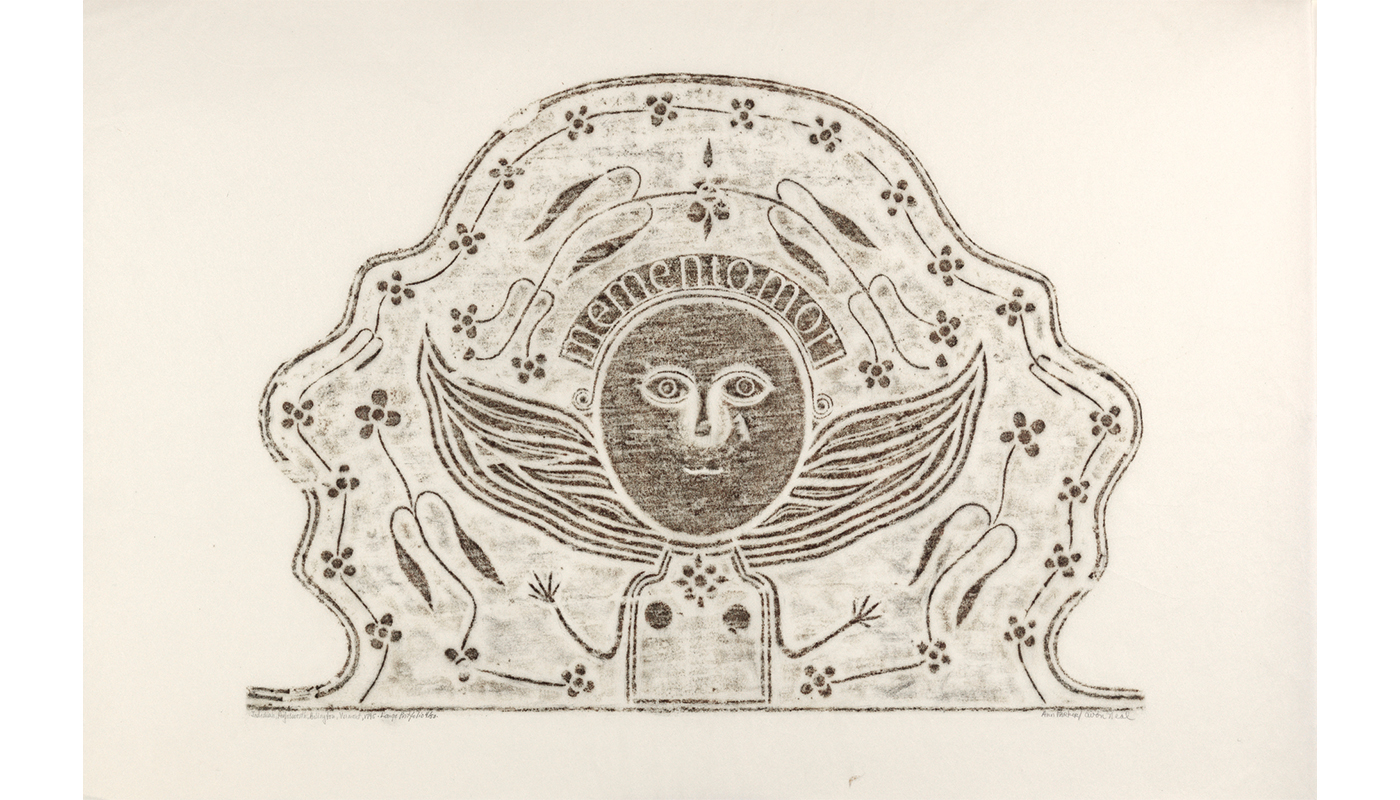
Arise Ye Dead
Maggie Kurkoski is a member of the Smith College class of 2012 and the Brown Post-Baccalaureate Curatorial Fellow in the Cunningham Center.
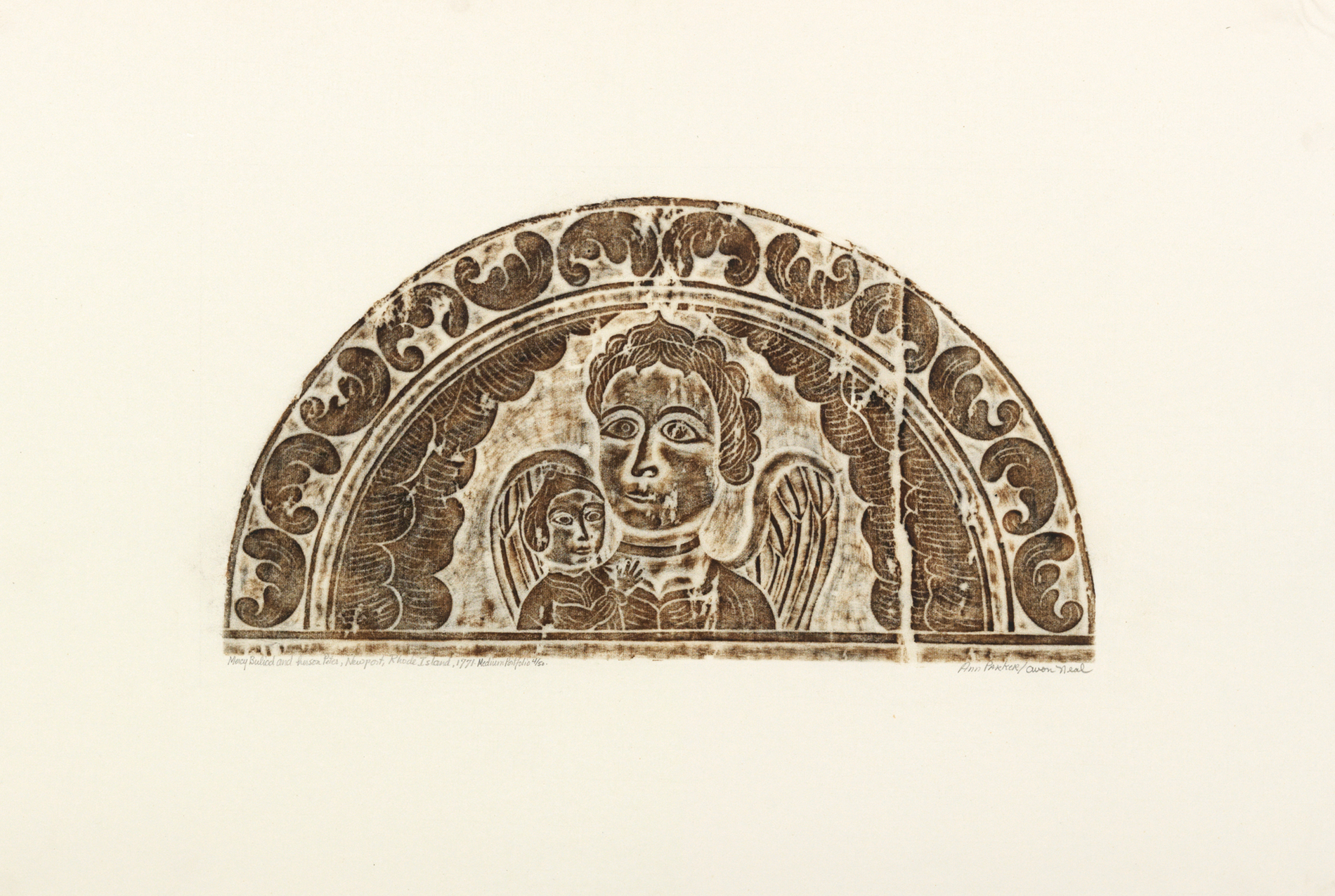
Ann Parker and Avon Neal. American, Parker: b. 1934; Neal: 1922–2003. Newport, Rhode Island: 1771; Portfolio of Rubbings from Early American Stone Sculpture Found in the Burying Grounds of New England, 1964. Ink rubbing on paper. Gift of Mrs. Harold E. Hodgkinson (Laura White Cabot, class of 1922). Photography by Petegorsky/Gipe. SC 1964.38.12.
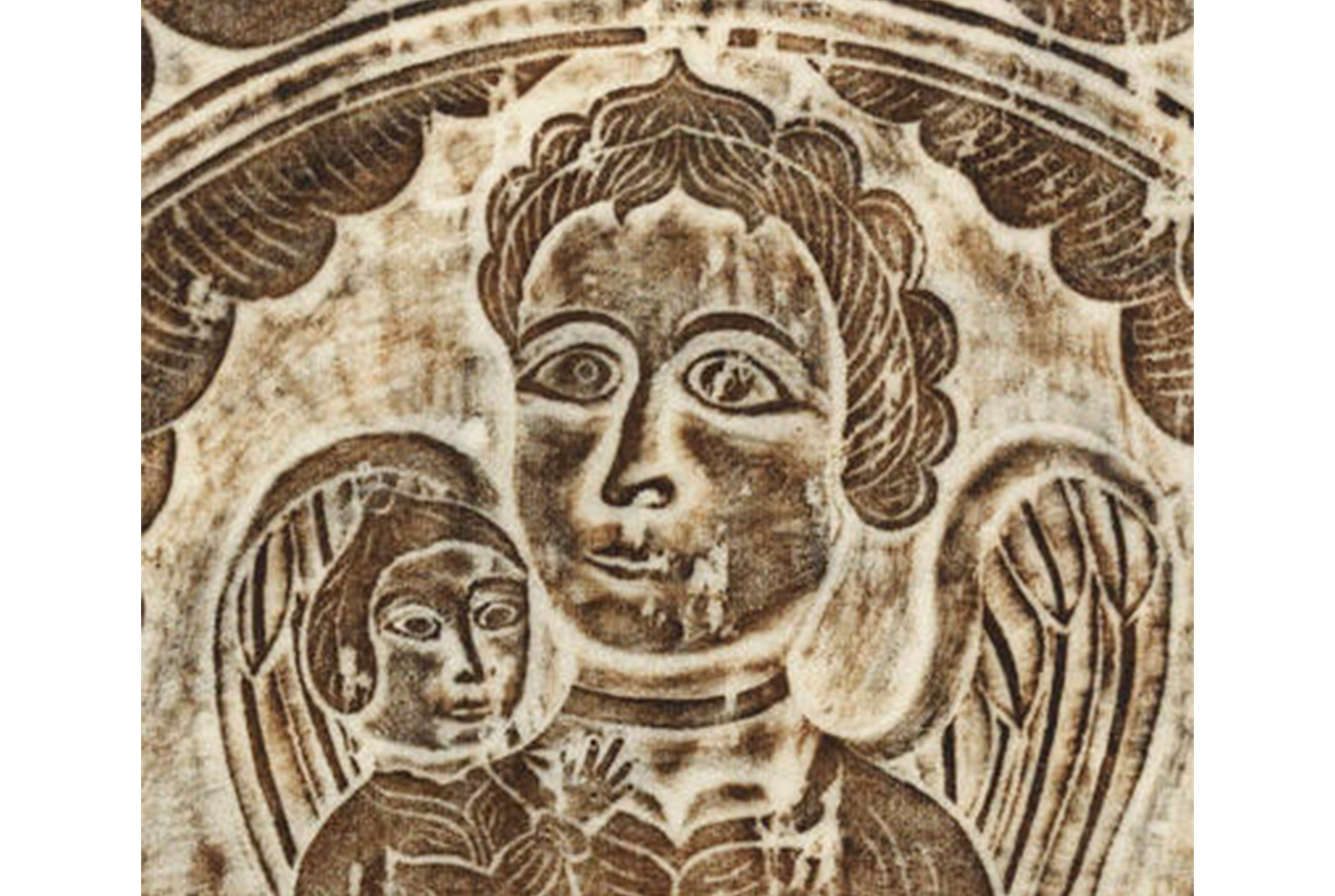
Detail of faces (Newport, Rhode Island)
In the years after 1630, the Puritans settled in what soon became known as New England on the east coast of the United States. Although they were iconoclasts, or opponents of any and all "graven images," within a generation their cemeteries had moved from simple text-only markers to tombstones with intricate folk designs.
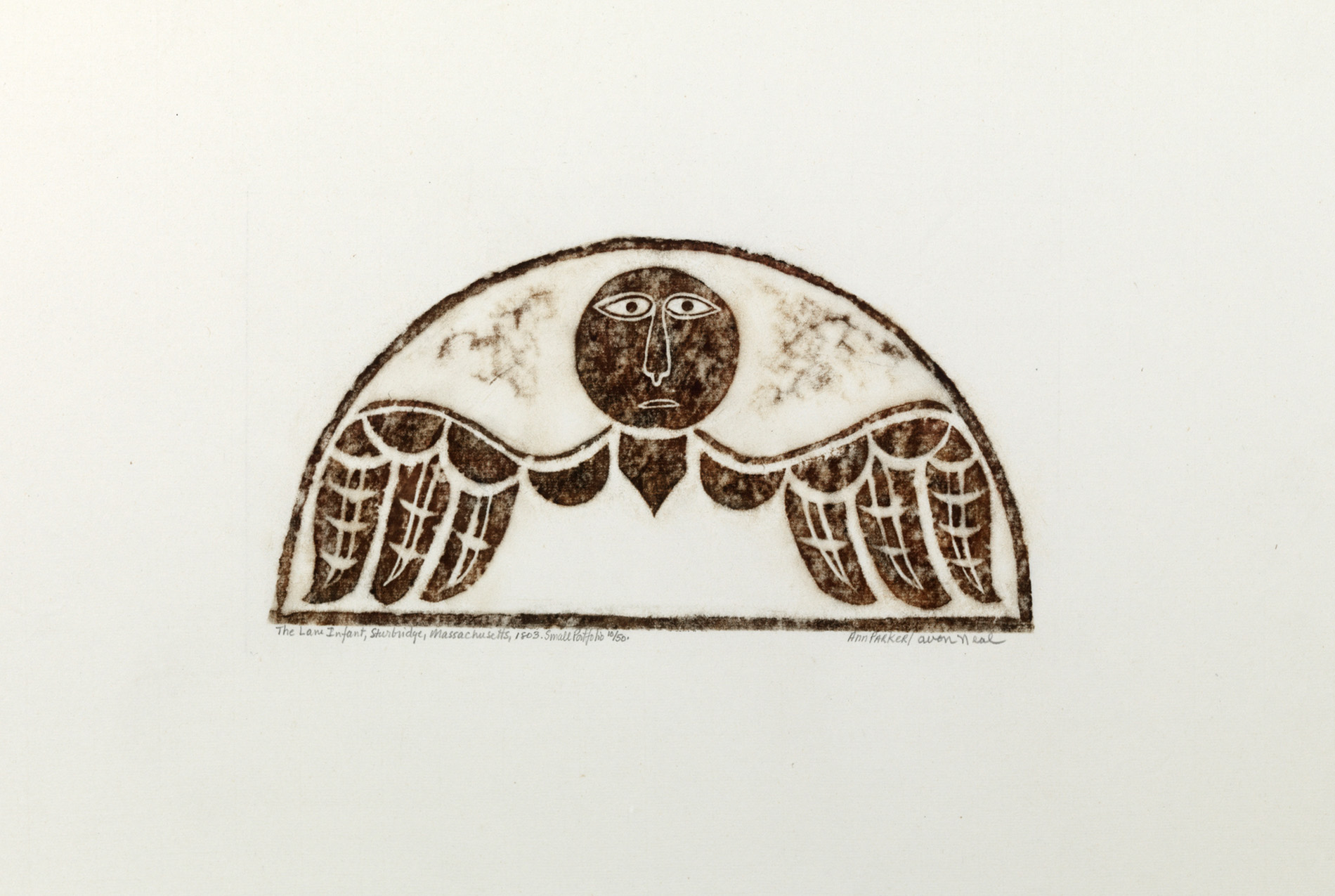
Ann Parker and Avon Neal. American, Parker: b. 1934; Neal: 1922–2003. Sturbridge, Massachusetts: Portfolio of Rubbings from Early American Stone Sculpture Found in the Burying Grounds of New England, 1964. Gravestone rubbing in ink on paper. Gift of Mrs. Harold E. Hodgkinson (Laura White Cabot, class of 1922). Photography by Petegorsky/Gipe. SC 1964.37.6.
While some gravestone artists became well-regarded enough to be remembered by name today, many worked only in their local towns or villages. Style ranges throughout the region.
Looking at the sermons, letters and the general abundance of written material that the Puritans left behind, their preoccupation with death and the eternal emerges again and again. Their headstones weren't free from this mania: many feature skulls and crossbones, skeletons, written reminders to the viewer that they, too, will die one day. In the gravestone below, even Death himself is personified. An hourglass emphasizes how any mortal's time is slowly running out. To a modern observer, the effect is rather morbid.
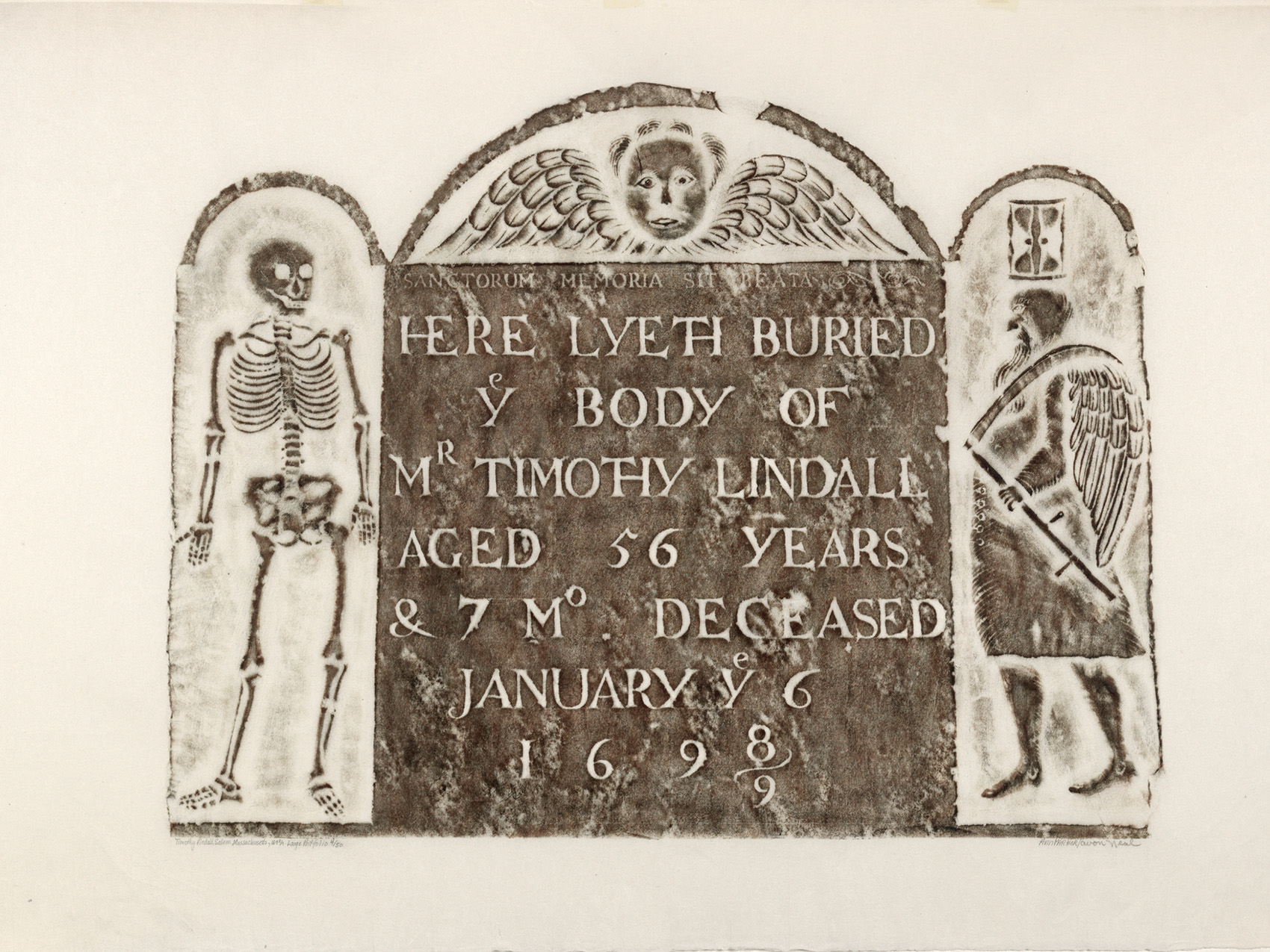
Ann Parker and Avon Neal. American, Parker: b. 1934; Neal: 1922–2003. Salem, Massachusetts: Portfolio of Rubbings from Early American Stone Sculpture Found in the Burying Grounds of New England, 1964. Ink rubbing on paper. Gift of Mrs. Harold E. Hodgkinson (Laura White Cabot, class of 1922). Photography by Petegorsky/Gipe. SC 1964.39.1.
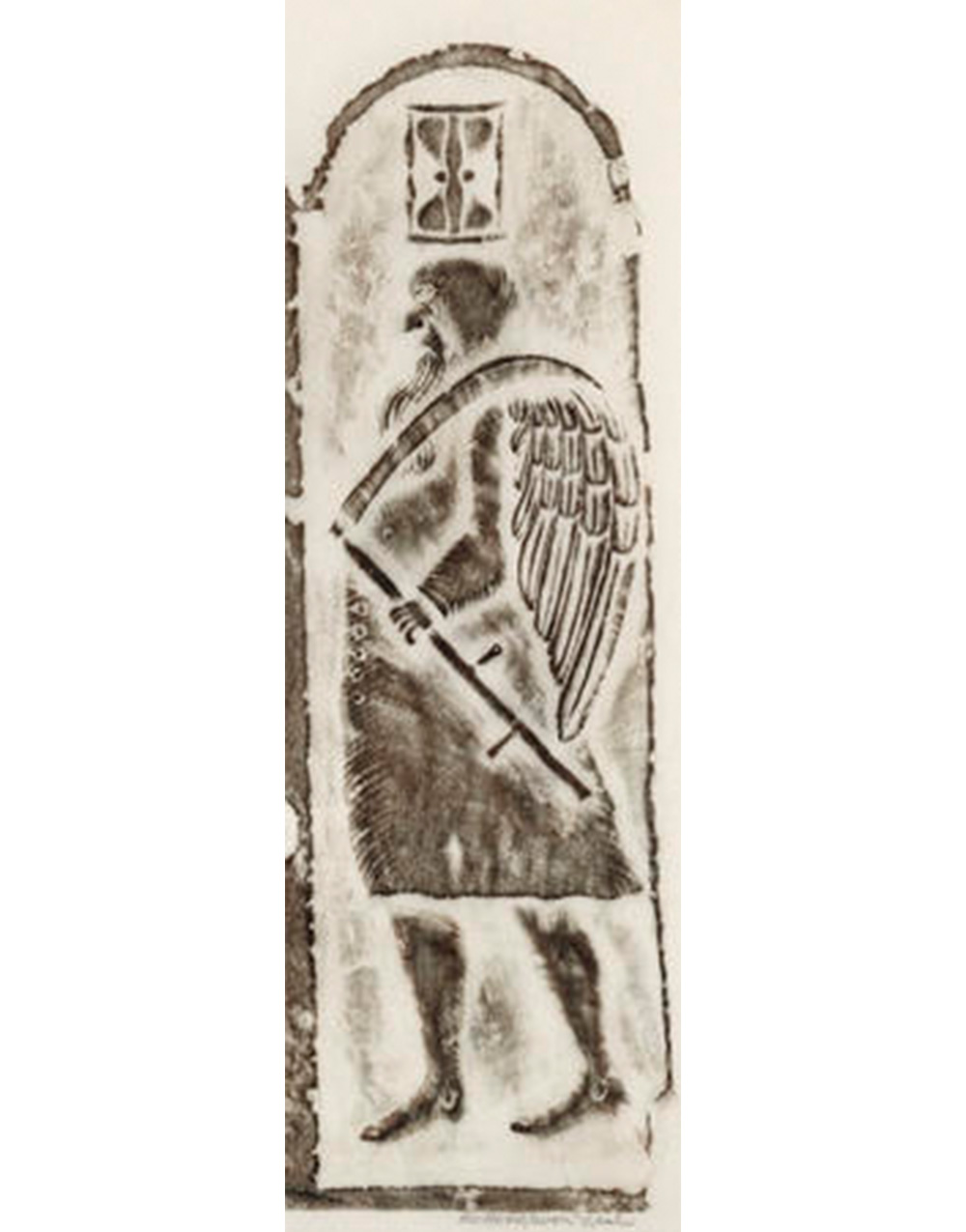
Detail of Death (Salem, Massachusetts)

Detail of Skeleton (Salem, Massachusetts)
Many gravestones also referenced the Last Judgement, the final day of humanity in the Christian faith when the bodies of the dead would rise from their graves. Below, one tombstone features an angel trumpeting out a message for that fateful day: Arise ye dead.
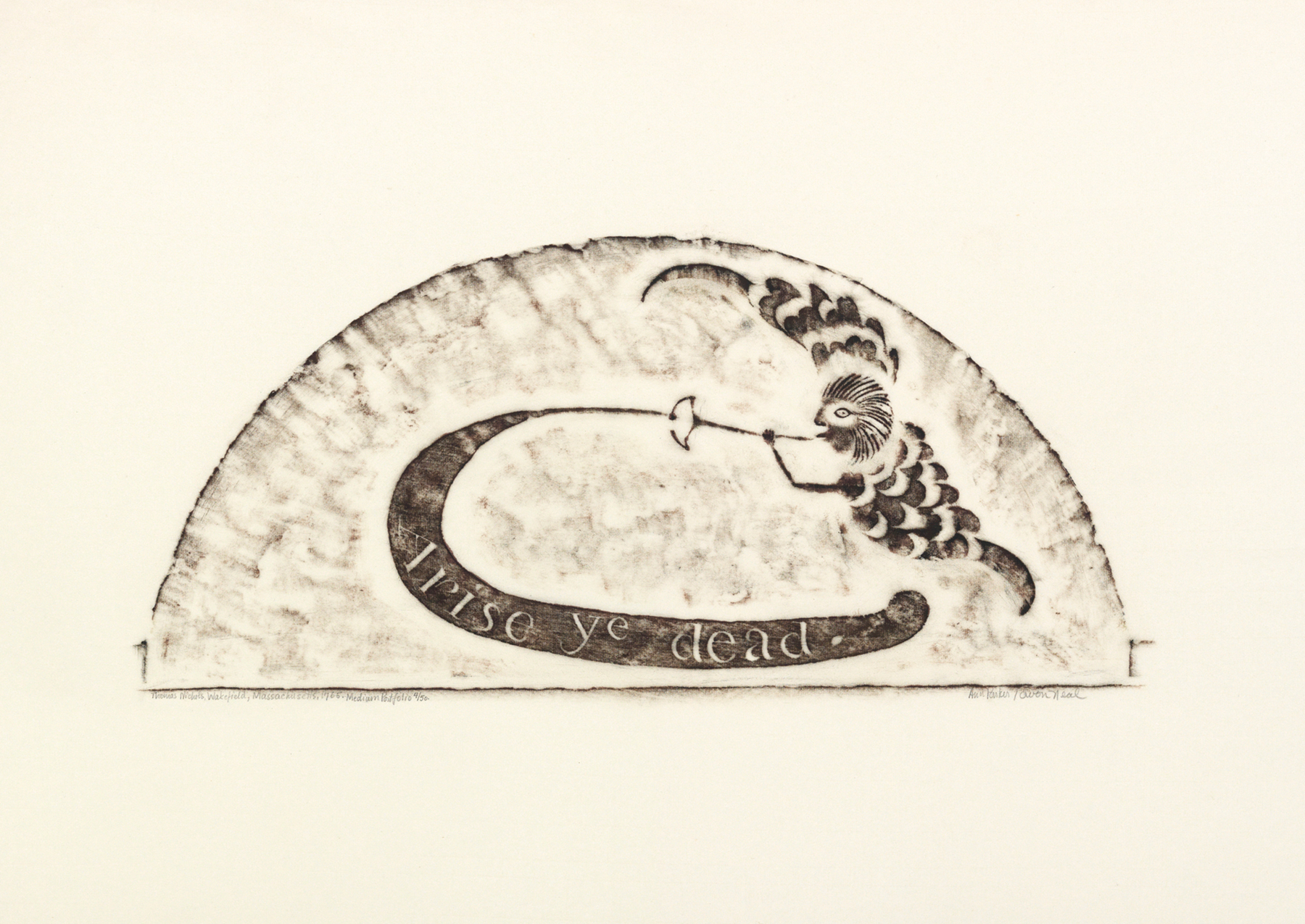
Ann Parker and Avon Neal. American, Parker: b. 1934; Neal: 1922–2003. Wakefield, Massachusetts: 1765; Portfolio of Rubbings from Early American Stone Sculpture Found in the Burying Grounds of New England, 1964. Ink rubbing on paper. Gift of Mrs. Harold E. Hodgkinson (Laura White Cabot, class of 1922). Photography by Petegorsky/Gipe. SC 1964.38.1.
Ann Parker and Avon Neal captured dozens of these unique gravestones from all around New England through stone rubbings. By placing a piece of paper on a grave and gently rubbing a piece of chalk over it, the image transfers onto the paper, preserving the intricate carving. As the original gravestones are constantly exposed to the environment, which wears down their faces, Ann Parker and Avon Neal saved these ghostly images for future generations to see.

Ann Parker and Avon Neal. American, Parker: b. 1934; Neal: 1922–2003. Brookfield, Massachusetts: 1798; Portfolio of Rubbings from Early American Stone Sculpture Found in the Burying Grounds of New England, 1964. Ink rubbing on paper. Gift of Mrs. Harold E. Hodgkinson (Laura White Cabot, class of 1922). Photography by Petegorsky/Gipe. SC 1964.38.13.

Ann Parker and Avon Neal. American, Parker: b. 1934; Neal: 1922–2003. Spencer, Massachusetts: Portfolio of Rubbings from Early American Stone Sculpture Found in the Burying Grounds of New England, 1964. Gravestone rubbing in ink on paper. Gift of Mrs. Harold E. Hodgkinson (Laura White Cabot, class of 1922). Photography by Petegorsky/Gipe. SC 1964.37.2.
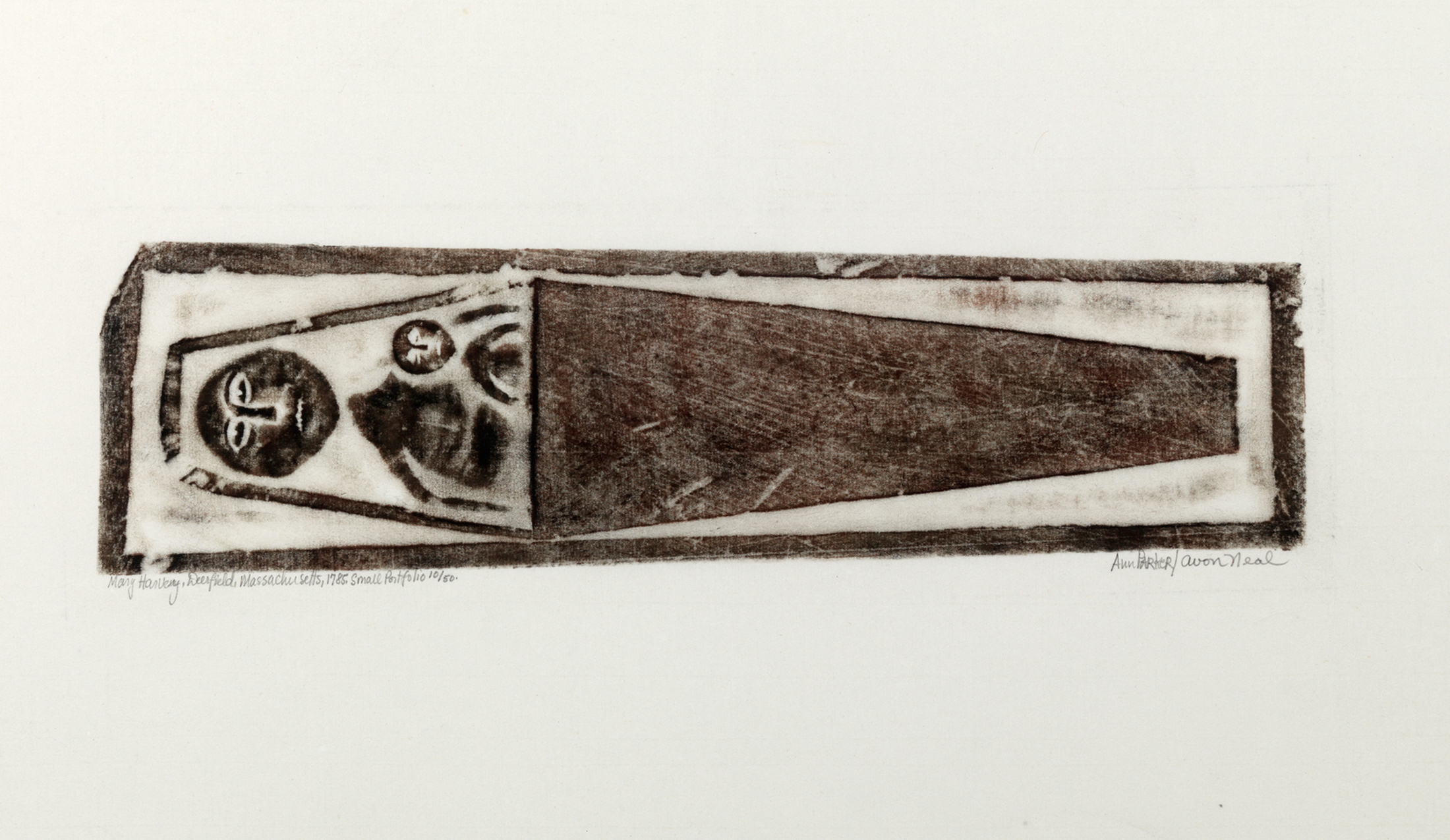
Ann Parker and Avon Neal. American, Parker: b. 1934; Neal: 1922–2003. Old Deerfield, Massachusetts: Portfolio of Rubbings from Early American Stone Sculpture Found in the Burying Grounds of New England, 1964. Gravestone rubbing in ink on paper. Gift of Mrs. Harold E. Hodgkinson (Laura White Cabot, class of 1922). Photography by Petegorsky/Gipe. SC 1964.37.8.